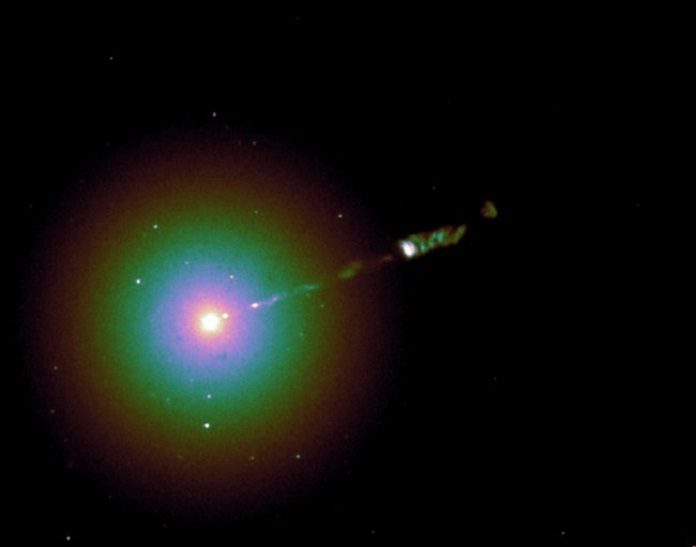In recent years, observers have sought galaxies that might contain supermassive black holes (SMBH) that is dislodged from its balance position. Among the situations that could cause such a displacement are the merger of two SMBHs or the presence of a double match of SMBHs and finding an illustration would give cosmologists data about the development of galaxies and the frequency of the formation and mergers of this type of object.
One of the candidates for a displaced SMBH is the giant elliptical galaxy M87, which contains one of the nearest and most studied galactic nuclei (AGN). A new study by Elena López Návas, a student at the University of La Laguna, has produced new data suggesting that the SMBH in this galaxy is in its equilibrium position and that the displacements found previously were due to variations in the center of production of light.
The “photocentre” caused by outbursts from its relativistic jet, a flow of material expelled from near the surface of the black hole at velocities close to light speed.
During the study, scientists analyzed countless high-resolution pictures of M87 taken at various occasions and with various instruments on the NASA/ESA Hubble Space Telescope (HST) and on ESA’s Very Large Telescope (VLT) (Cerro Paranal, Chile). They found that the images which appeared to show a displacement of the center of the galaxy were taken at an epoch when M87 had a major outburst, which could be measured over the whole range of the electromagnetic spectrum.
Almudena Prieto Escudero, co-author of the article and a researcher at the Instituto de Astrofísica de Canarias (IAC) said, “This outburst took place between the years 2003 and 2007 in a knot within the jet known as HST-1, the closest knot to the nucleus of M87. While this outburst lasted, this knot increased in brightness so much that it even outshone the nucleus itself.”
“A time series analysis of the displacements of the center of the galaxy show that this outburst is related to the change in the position of the photocentre. But afterward, the photocentre and the nucleus were in the same place, so that we inferred that the nucleus and the black hole were always in the same place, which is the potential mínimum at the center of the galaxy.”
These new data have inspired much interest in the astrophysical community because studying the position of the SMBH in M87 is critical for understanding the evolution of the galaxy, and for the analysis of jets in other AGNs. “In addition, this research reminds us that we must be very careful when we study variable sources that show irregularities, such as this enormous jet,” says Lopez, who is now working with a training research contract at the IAC.
The study is published in the Monthly Notices of the Royal Astronomical Society.
